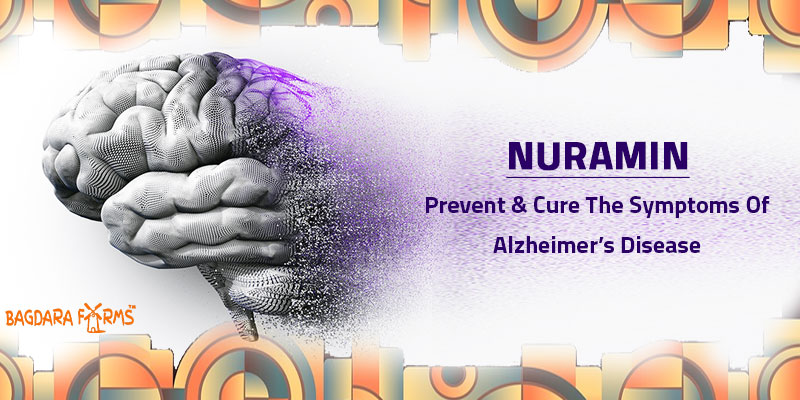Memories of the good times always bring a good sense of nostalgia. Imagine how upsetting it must be not to be able to remember close ones and the memories associated with them. That is precisely what happens in Alzheimer’s disease. Also referred to as senile dementia, Alzheimer’s disease is a progressive neurological disorder that destroys the memory and other vital mental functions. This loss is caused primarily due to the death of brain cells and is the most common form of dementia (a group of brain disorders that results in the loss of intellectual and social skills).
Various medical studies and research have shown that the cause of Alzheimer’s disease could be a combination of environmental factors, genetic and lifestyle on the brain over a period. This disease slowly kills the neurons or brain cells and also decreases which leads to brain shrinkage. It is the most common type of dementia. The two main types of abnormal structures seen when a brain tissue affected with Alzheimer’s disease is examined under a microscope are:
- Tangles– Another protein called tau helps in the transport of nutrients throughout the long extensions of the brain cells. Threads of tau proteins twist into abnormal tangles inside the brain cells causing a failure in the transport system and death of brain cells.
- Plaques- The protein called beta-amyloid forms clumps in the brain that can damage the brain cells by disrupting the cell-to-cell communication. A vast collection of beta-amyloid on the outside of brain cells is one of the main culprits of Alzheimer’s disease.
Some of the Risk Factors Involved in Alzheimer’s Disease Are:
- Family history and genetics- Scientists have found out that a person’s chances of getting Alzheimer’s disease increase if an immediate relative like a parent or a sibling has Alzheimer’s disease. The most potent risk gene is apolipoprotein e4.
- Gender- Women are more prone to developing Alzheimer’s disease as compared to men.
- Lifestyle- Lifestyle factors that can affect the development of Alzheimer’ s disease are high blood pressure, high blood cholesterol, lack of exercise, obesity, smoking, diet minus fresh fruits and vegetables
- Age- As the age increases, the chances of getting Alzheimer’s also increases and the risk dramatically increases after the age of 65. Researchers have also found out that the rate of dementia doubles after every decade after the age of 80.
- Head trauma- Individuals who have had head trauma in the past have a higher risk of Alzheimer’s disease.
The initial symptoms include forgetfulness and mild confusion. Over a period, the person’s memory starts to fade off especially the recent ones. The ability to function at work and home starts declining. It may also cause the problem with thinking, reasoning, making judgements, decisions, planning and performing tasks. Some of the changes in the personality/ behaviour are depression, wandering, and changes in sleep pattern, mood swings, distrust, delusions, social withdrawal and irritability.
There are no fixed tests to diagnose this condition. The physician might check the patient’s neurological function. Some other tests like blood test, urine test, CT scan, MRI scan of the brain and screening for depression can also be done. Since there are no drugs available for curing the disease, some medications are given to improve the symptoms and improve patient’s quality of life.
How Nuramin Helps in Alzheimer’s Disease
Nuramin is a miraculous product from Bagdara Farms that can prevent and cure some of the symptoms of Alzheimer’s disease. It is enriched with the therapeutic goodness of curcumin and turmerone which help in the following ways:
- The anti-inflammatory property of curcumin and turmerone helps to decrease the inflammation in the brain, thus protecting it from degeneration of neurons.
- Curcumin has a neuroprotective property that protects the cells as well as cognitive function.
- Turmerone and curcumin are natural epigenetic agents which act as natural inhibitors of the enzyme that increases the probability of getting Alzheimer’s disease.
- Since curcumin has antidepressant property, it helps to reduce the incidents of depression in Alzheimer’s patients.
- The cognitive functions in the elderly are protected by curcumin by enhancing the memory.
- The anti-amyloidogenic properties of curcumin reduce the aggregation of amyloid beta plaques. It also prevents the collection of tau protein in Alzheimer’s disease.
Recommended Dosages to Cure Alzheimer’s Disease:
For ten years and above-
- Take ½ tsp of Nuramin, a pinch of black pepper and boil it with a glass of water. Once boiled, add a dash of honey and consume it twice daily.
- ½ tsp Nuramin, 2 cups of water, ¼ tsp black pepper and 70 ml edible oil. Boil these together and make a paste. Store it in a jar and add ½ tsp of this paste to a cup of hot milk or tea and consume it once daily.
- Take ½ tsp of Nuramin, one tsp of raw honey and a pinch of black pepper. Boil 1 cup of milk with Nuramin and black pepper. Once boiled, add honey to it and drink this concoction twice a day.
It is generally advised to start the dosages of Nuramin in small quantities and gradually increasing it over a period.
Keep Alzheimer’s Disease at Bay with Curcumin

Listen To Article
[sc_embed_player fileurl=”https://bagdarafarms.com/wp-content/uploads/2019/03/Curcumin-For-Alzheimers.mp3″]
